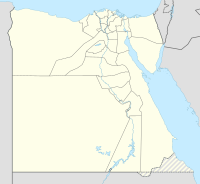Battle of Sidi Barani
| Battle of Sidi Barrani | |||||||
|---|---|---|---|---|---|---|---|
| Part of Western Desert Campaign 1940–1943 | |||||||
 Western Desert |
|||||||
|
|||||||
| Belligerents | |||||||
|
|
|
||||||
| Commanders and leaders | |||||||
|
|
|
||||||
| Strength | |||||||
| 36,000 soldiers 120 guns 275 tanks 142 aircraft |
60,000 soldiers 250 guns 120 tanks 331 aircraft |
||||||
| Casualties and losses | |||||||
| 624 soldiers | 2,194 killed 2,286 wounded 38,300 prisoners 237 guns 73 tanks c. 1,000 vehicles |
||||||
|
|
|||||||
The Battle of Sidi Barrani (10–11 December 1940) was the opening battle of Operation Compass, the first big British attack of the Western Desert Campaign. Sidi Barrani on the Mediterranean coast in Egypt, had been occupied by the Italian 10th Army, during the Italian invasion of Egypt from 9–16 September 1940 and was attacked by British, Commonwealth and imperial troops who re-captured the port. While retreating from Sidi Barrani and Buq Buq, Italian forces crowded on the coast road and were easy targets for HMS Terror and two gunboats, which bombarded the Sollum area all day and most of the night of 11 December. By late on 12 December, the only Italian positions left in Egypt were at the approaches to Sollum and the vicinity of Sidi Omar. The British took 38,300 prisoners for a loss of 624 men and prolonged the five-day raid on Italian positions in Egypt, eventually capturing Cyrenaica and most of the 10th Army.
Cyrenaica, the eastern province of Libya had been an Italian colony since the Italo-Turkish War (1911–1912). With Tunisia, a part of French North Africa to the west and Egypt to the east, the Italians prepared to defend both frontiers through a North Africa Supreme Headquarters, under the command of the Governor-General of Italian Libya, Marshal of the Air Force, Italo Balbo. Supreme Headquarters had the 5th Army (General Italo Gariboldi) and the 10th Army (General Mario Berti) which in mid-1940 had nine metropolitan divisions of about 13,000 men each, three Milizia Volontaria per la Sicurezza Nazionale (Blackshirt) and two Italian Libyan Colonial Divisions with 8,000 men each. Italian army divisions had been reorganised in the late 1930s, from three regiments each to two for increased mobility once they were mechanised and reservists were recalled in 1939, along with the usual call-up of conscripts.
...
Wikipedia

